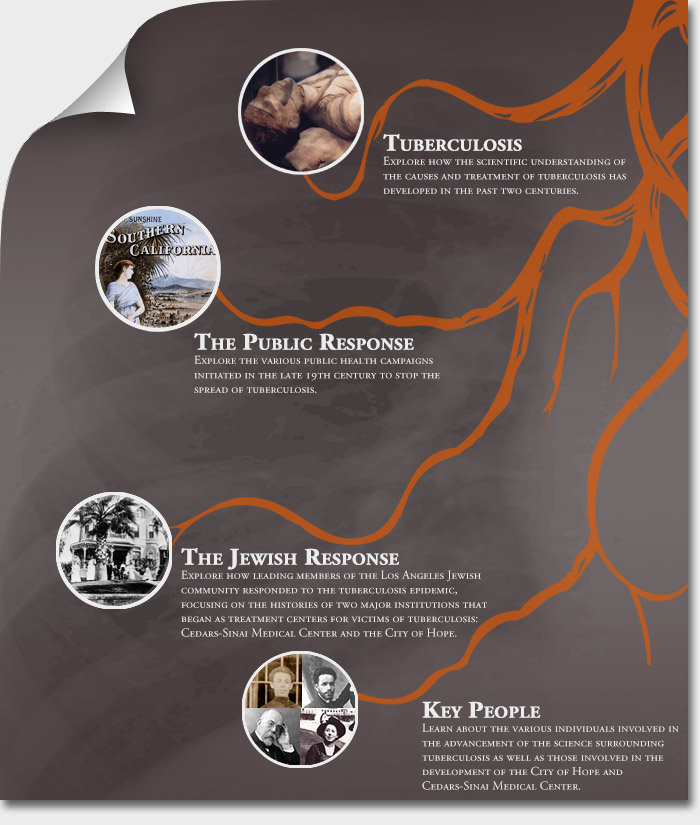Main Page

An aggressive advertising campaign led by the city’s civic and business elites produced unprecedented growth in Los Angeles’ economy and population in the early twentieth century. These boosters showcased the city’s natural beauty, its moderate climate and its fertile soil, casting Los Angeles as a modern metropolis where dirty, overcrowded slums were replaced by sun-soaked single-family homes. They also emphasized the therapeutic effects of the city’s climate, offering stories of thousands of residents whose ailments had been cured in the “balmy skies” of Southern California. Their efforts attracted over 500,000 new residents to the city between 1890 and 1920, including over 50,000 Jews. But rather than drawing only young, able-bodied workers, the boosters’ campaign also attracted thousands of new residents suffering from the “white plague” (tuberculosis) and other chronic lung diseases, migrants whom business and civic leaders found less desirable as residents of their Paradise.
Sent by doctors from the east and Midwest to seek relief in the warm, dry climates of the West, perhaps as many as one quarter of the city’s new arrivals had come to Southern California to get well in the health resorts, spas and hospitals of an emerging “sanitarium belt.” With no effective medical treatment available, unable to work, and challenged to find suitable housing, these “tuberculars” became hopelessly dependent on local charities and relief programs. As a result, the well-established Jewish community of Los Angeles faced the first significant test of its rapidly growing size and diversity. Three cornerstone institutions emerged in the Jewish response to the white plague in the City of Angels - Kaspare Cohn Hospital (renamed Cedars of Lebanon Hospital), the Mt. Sinai Home for Incurables, and the Jewish Consumptive Relief Association’s Duarte sanatorium (better known as the City of Hope).
The unintended consequences of the boosters’ campaigns to draw people to Los Angeles brought into stark relief a range of contending interests, social anxieties, and community rivalries. Examining the origins of these three institutions maps out the matrix of science, technology and treatment, public health policy, and social attitudes about disease and contagion that shaped the place of illness in healthful Southern California.

Discussion of "Main Page"
Add your voice to this discussion.
Checking your signed in status ...